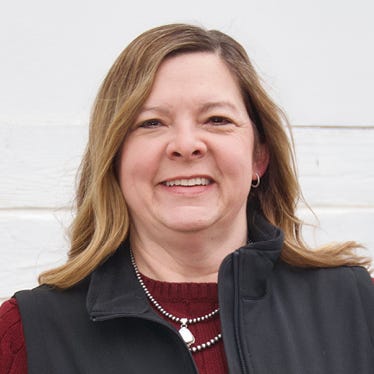October 27, 2022

Soybean farmers continue to work toward growing more with less. This benefits end users of soybeans and soy-based products, and continues to expand markets worldwide.
“A lot of times we talk about feeding the world; but a lot of folks — farmers included — don’t always know what that means,” says Polly Ruhland, CEO of the United Soybean Board, — the soybean checkoff — which is governed by a group of soybean farmers from across the country. The goal of USB is to increase the return on investment for all U.S. soybean farmers through research and expanding markets.
Ruhland says soy has been a critical part of a global strategy to feed the world throughout history, with many cultures relying on it as the least expensive, most efficient and most complete form of plant protein. “With farmers who traditionally aren’t used to eating soy directly, they might not think about how important it is in human diets. In developing countries, the World Initiative for Soy in Human Health helps people understand how important soy is in feeding the people and as animal feed,” she says. Soy plays a unique role in providing nutrition in many parts of the world, through the bean itself or as animal feed to provide a protein product.
The board’s mission
The United Soybean Board is made of 78 farmers, and Ruhland says they look at all the areas where a development can have an impact. “When farmers realize helping developing countries can help get them to a level of self-sufficiency and even become an economic player, they see how this can help sell U.S. soy,” she says. “Doing well for the world does good for them at home and helps expand soy’s reach globally. That’s the message farmers can really understand in how it helps the world and helps themselves.”
Cultural differences in food plays a part when it comes to soy usage and the growth of its use as a plant protein. When looking at U.S. undernourishment, most think more about consuming animal proteins. Ruhland says once social issues are solved, the expansion of proteins in the areas it’s needed can include more soy as it is available.
Sustainability and renewability
USB’s new strategic plan is partner to deliver sustainable soy to every life, every day. Food is a big part of that, but also other renewable-based solutions help every life every day.
Soy’s ability to grow more with less continues to expand by leaps and bounds, Ruhland says. The demand for soy oil for renewable fuel is remarkable, which leaves a lot of soy meal leftover for use in the livestock industry. Research is being conducted on how soy plays a part in animal health. In swine health, soy has a remarkably positive effect on gut health and piglet growth, and does better than synthetic amino acids in this area. The market share is expected to increase in this area, as more nutritionists use soybeans to provide this benefit in swine diets.
“We are just now seeing what amino acids in soy are important for animal health and diets,” Ruhland says. “We can continue to produce more soy with less inputs, and this will help provide enough soy for all these needs.”
Amino acid profile research is continual by animal science researchers including how the amino acid profiles benefit the animals. Animal nutrition working groups are glad to help find these new and expanded uses.
The expanded uses are also seen in sustainable products, such as the soy-based asphalt used at the Farm Progress Show grounds. “When we think about sustainability of the planet, what we want and ingredients for all kinds of things — food or industrial products — is sustainable ingredients. So, when you think about all the places soy oil can replace petroleum, it’s amazing. Goodyear has been using it in tires and has committed to using soy in all their tires by 2050, instead of petroleum,” Ruhland adds.
Similar technology is used in the rubber soles of Skechers shoes. Other uses include the development of artificial turf and as a non-toxic concrete sealant. Soy plastics are being developed that are biodegradable.
“All these things help the farmers and help the planet —and soybean farmers are connected to it even if they don’t realize it,” she says. “It’s an exciting time to be in the soybean industry.”
About the Author(s)
You May Also Like






